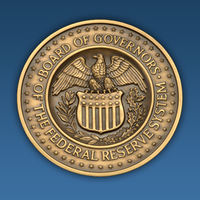The Stock Market's Dance: Euphoria and Underlying Risks
May 16, 2025, 9:40 pm

Location: United States, California, Cupertino
Employees: 10001+
Founded date: 1976
Total raised: $100M
The stock market is a fickle friend. One moment, it lifts you high; the next, it can drop you like a hot potato. Recently, U.S. stocks have been on a winning streak. The S&P 500 has logged four consecutive days of gains, a 4.54% rise that feels like a breath of fresh air. But beneath this buoyancy lies a web of complexities that could trip up even the most optimistic investors.
Jerome Powell, the U.S. Federal Reserve Chair, has been sounding alarms. He warned that longer-term interest rates are likely to climb. Inflation, he says, could become more volatile. Supply shocks, those pesky disruptions that can ripple through the economy, may become more frequent and persistent. This isn’t just a casual observation; it’s a warning shot across the bow.
The market’s recent surge is like a head rush. It feels good, but it could fade fast. The optimism stems from a recent U.S.-China trade deal, but the reality is more complicated. China continues to block exports of seven rare earth metals crucial for defense and energy sectors. This isn’t just a minor inconvenience; it’s a significant roadblock that could weigh heavily on U.S. industries.
Meanwhile, President Trump has been vocal about his concerns regarding Apple’s manufacturing plans in India. He doesn’t want Tim Cook, Apple’s CEO, building factories there. This statement raises eyebrows. How can a country like India, eager to attract foreign investment, agree to such demands? The dynamics of international trade are shifting, and this could lead to friction.
The S&P 500’s recent performance has been impressive. On Thursday, it gained 0.41%. The Dow Jones Industrial Average rose 0.65%, while the Nasdaq lagged, dropping 0.18%. Across the Atlantic, the pan-European Stoxx 600 climbed 0.56%. These numbers paint a rosy picture, but they mask underlying tensions.
Investors are feeling a sense of lightness, but it’s essential to remember that markets can be deceptive. Tariffs, once a thorny issue, seem less daunting now. The U.S. is negotiating agreements with various countries, which could ease some trade tensions. However, the path ahead is not without obstacles. The complexities of global trade are like a tangled ball of yarn—pull one thread, and the whole thing could unravel.
The situation in Japan adds another layer of complexity. The Nikkei 225 has been teetering, with the country’s economy shrinking by 0.2% in the first quarter. This contraction is steeper than expected and raises questions about Japan’s economic health. Investors are wary, and this caution could spill over into U.S. markets.
In the realm of international relations, the absence of Trump and Putin from Ukraine-Russia peace talks in Turkey is telling. It reflects a lack of seriousness about resolving ongoing conflicts. Ukraine’s President Zelenskyy has pointed out that the lower-ranking officials sent by Russia indicate a lack of commitment to meaningful dialogue. This geopolitical tension could have ripple effects on global markets.
The U.K.-U.S. trade deal has been a hot topic, particularly for European automakers. One company stands to benefit significantly from this agreement. However, the broader implications for the European Union remain uncertain. As businesses navigate this new landscape, the stakes are high.
India’s economic story is also evolving. Despite recent tensions with Pakistan, the Indian stock market has rebounded. Investors are looking past geopolitical flare-ups, viewing them as just one piece of a larger puzzle. India is still seen as an attractive investment destination, which could bolster its economy in the long run.
The interplay of these factors creates a complex tapestry. Investors must tread carefully. The current market euphoria could quickly turn into a sobering reality. Powell’s warnings about supply shocks and inflation are not to be taken lightly. The stock market may be riding high now, but the winds of change are always blowing.
In conclusion, the stock market is a double-edged sword. It can uplift and inspire, but it can also cut deep. The recent gains are a welcome relief, but they come with strings attached. Investors must remain vigilant, keeping an eye on the horizon for potential storms. The dance of the stock market is intricate, and only those who understand its rhythm will thrive. As the saying goes, what goes up must come down. The question is, how far will it fall?
Jerome Powell, the U.S. Federal Reserve Chair, has been sounding alarms. He warned that longer-term interest rates are likely to climb. Inflation, he says, could become more volatile. Supply shocks, those pesky disruptions that can ripple through the economy, may become more frequent and persistent. This isn’t just a casual observation; it’s a warning shot across the bow.
The market’s recent surge is like a head rush. It feels good, but it could fade fast. The optimism stems from a recent U.S.-China trade deal, but the reality is more complicated. China continues to block exports of seven rare earth metals crucial for defense and energy sectors. This isn’t just a minor inconvenience; it’s a significant roadblock that could weigh heavily on U.S. industries.
Meanwhile, President Trump has been vocal about his concerns regarding Apple’s manufacturing plans in India. He doesn’t want Tim Cook, Apple’s CEO, building factories there. This statement raises eyebrows. How can a country like India, eager to attract foreign investment, agree to such demands? The dynamics of international trade are shifting, and this could lead to friction.
The S&P 500’s recent performance has been impressive. On Thursday, it gained 0.41%. The Dow Jones Industrial Average rose 0.65%, while the Nasdaq lagged, dropping 0.18%. Across the Atlantic, the pan-European Stoxx 600 climbed 0.56%. These numbers paint a rosy picture, but they mask underlying tensions.
Investors are feeling a sense of lightness, but it’s essential to remember that markets can be deceptive. Tariffs, once a thorny issue, seem less daunting now. The U.S. is negotiating agreements with various countries, which could ease some trade tensions. However, the path ahead is not without obstacles. The complexities of global trade are like a tangled ball of yarn—pull one thread, and the whole thing could unravel.
The situation in Japan adds another layer of complexity. The Nikkei 225 has been teetering, with the country’s economy shrinking by 0.2% in the first quarter. This contraction is steeper than expected and raises questions about Japan’s economic health. Investors are wary, and this caution could spill over into U.S. markets.
In the realm of international relations, the absence of Trump and Putin from Ukraine-Russia peace talks in Turkey is telling. It reflects a lack of seriousness about resolving ongoing conflicts. Ukraine’s President Zelenskyy has pointed out that the lower-ranking officials sent by Russia indicate a lack of commitment to meaningful dialogue. This geopolitical tension could have ripple effects on global markets.
The U.K.-U.S. trade deal has been a hot topic, particularly for European automakers. One company stands to benefit significantly from this agreement. However, the broader implications for the European Union remain uncertain. As businesses navigate this new landscape, the stakes are high.
India’s economic story is also evolving. Despite recent tensions with Pakistan, the Indian stock market has rebounded. Investors are looking past geopolitical flare-ups, viewing them as just one piece of a larger puzzle. India is still seen as an attractive investment destination, which could bolster its economy in the long run.
The interplay of these factors creates a complex tapestry. Investors must tread carefully. The current market euphoria could quickly turn into a sobering reality. Powell’s warnings about supply shocks and inflation are not to be taken lightly. The stock market may be riding high now, but the winds of change are always blowing.
In conclusion, the stock market is a double-edged sword. It can uplift and inspire, but it can also cut deep. The recent gains are a welcome relief, but they come with strings attached. Investors must remain vigilant, keeping an eye on the horizon for potential storms. The dance of the stock market is intricate, and only those who understand its rhythm will thrive. As the saying goes, what goes up must come down. The question is, how far will it fall?


